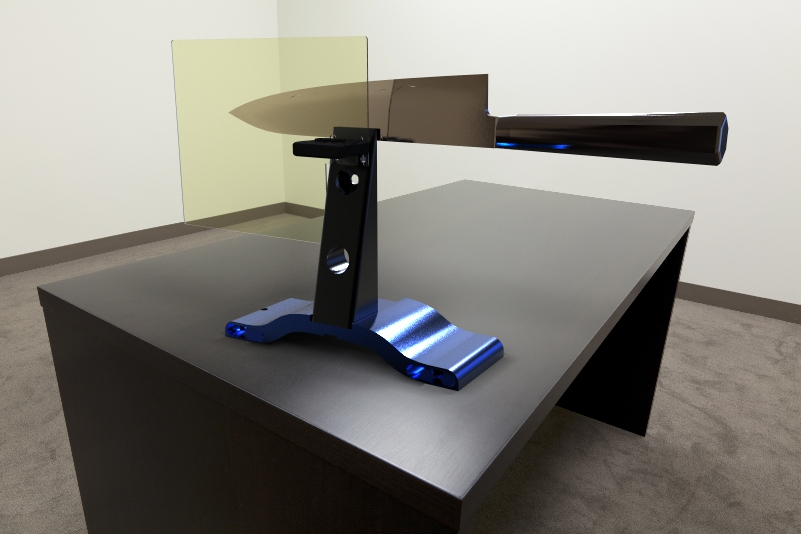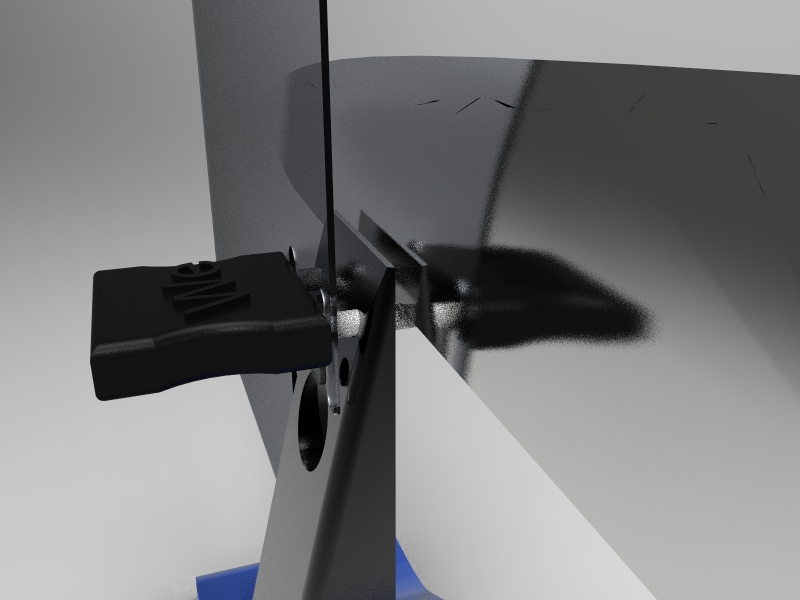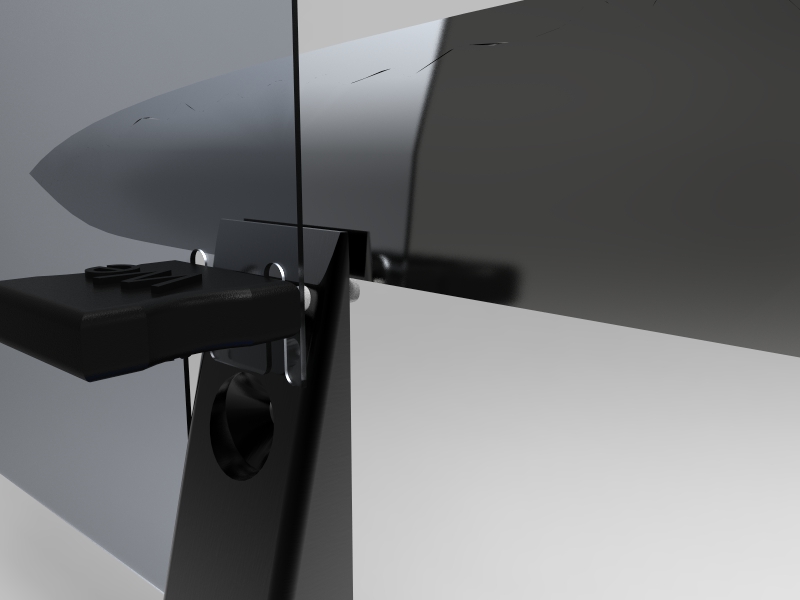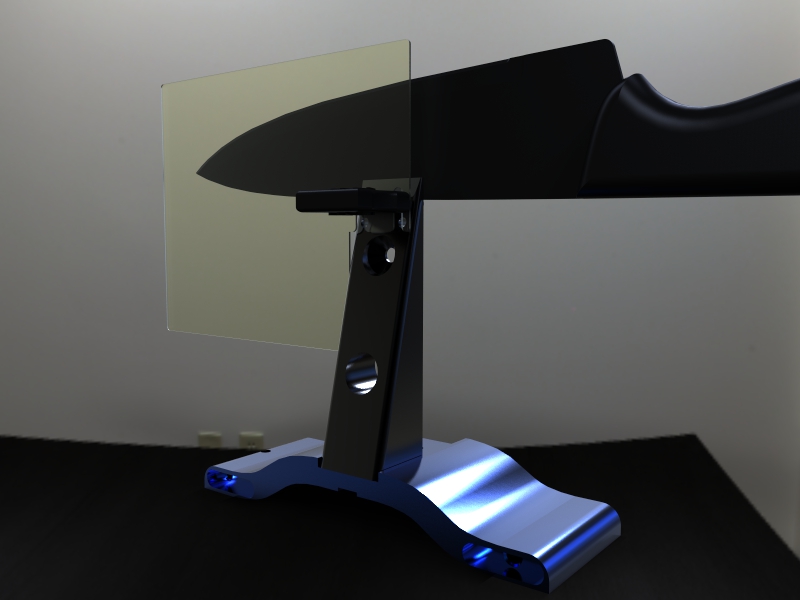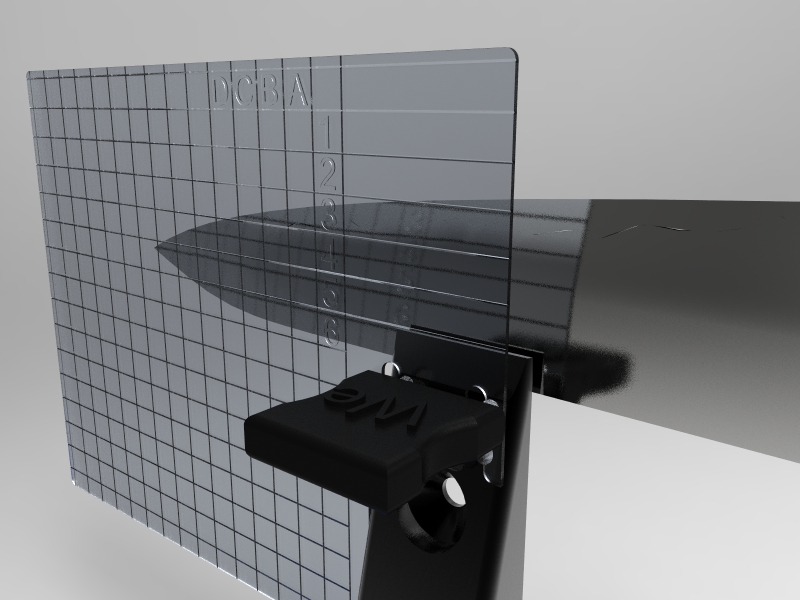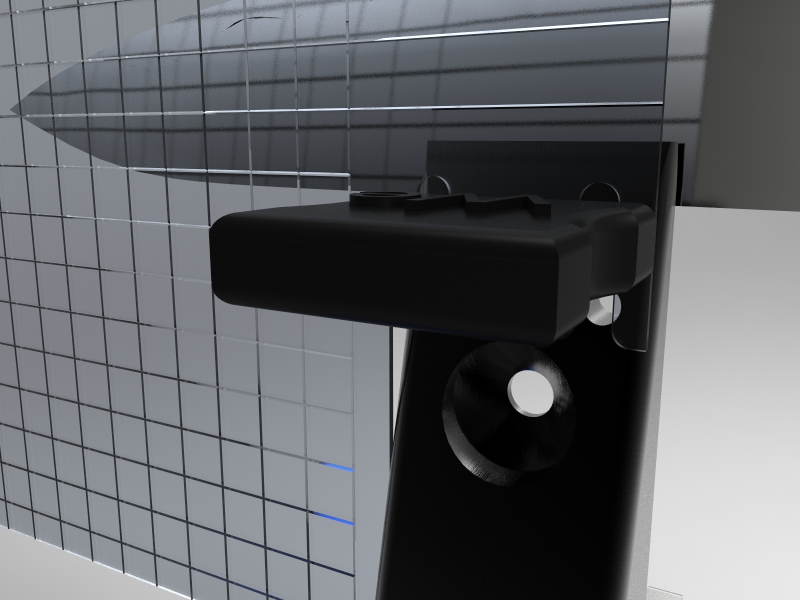Advanced alignment guide
Recent › Forums › Main Forum › Product Announcements › Advanced alignment guide
- This topic has 189 replies, 22 voices, and was last updated 05/24/2016 at 3:13 am by
 M1rrorEdge.
M1rrorEdge.
-
AuthorPosts
-
01/08/2016 at 12:23 am #30465
Clay, I think it’s a very good idea! I like the layout you presented, but like Geo I’d like the card to be at least as long as the current ruler. This is because I (and many other users, I assume) mainly sharpen kitchen knives, which are often 210-240 mm, but can be up to 300 mm.
I would, like on the current ruler, also like a scales to be printed on the card, so you can easily record your settings.
One thing I run into with the current depth key and using the ruler is that the pins of the current depth key are not very long. Ideally I’d first like to clamp the knife (using the depth key) and only then put the ruler/plastic card on. However, because the depth key pins often don’t extend out of the clamp at the “other” side of the vise, I have to first put the ruler on the depth key, then insert the depth key with the ruler into the vise and then clamp the knife. Then I have to remove the ruler (and thus the depth key), because it gets in the way with sharpening. This makes clamping a bit more of a hassle. So I’d like longer pins on the depth key. Or if that’s not possible… I’d like the card not put on the pins on the depth key, but on the top of the vise (and I’m not exactly sure how that could be done).
Molecule Polishing: my blog about sharpening with the Wicked Edge
01/08/2016 at 12:37 am #30469Anonymous
Inactive- Topics: 14
- Replies: 427
Bill, you should realize the current ruler or the new plastic card are not so much about finding the sweet spot, but about repeatability. Whether or not you have found the sweet spot and are sharpening with it, the ruler and card make it possible to re-clamp your knife and resharpen your knife in exactly the same position as before. That makes resharpening a breeze with the WEPS. That said, I like your method of finding the sweet spot. It probably works very well with the pocket knife on your photos. However, to complicate matters (they are never as simple as they seem at first sight), there is no “the” sweet spot. I wrote a blog post on this: Angle changes on the Wicked Edge. When sharpening a knife, the angle along the dotted lines in the following figure remains constant:
 These dotted lines are the horizontal line and the circle. Assume you have a knife with a long straight edge and then a tip with an acute curve. Your method of finding the sweet spot will result in some angle change along the straight edge. However, this will result in some angle changes along the straight part of the edge. As an alternative you could choose clamp the knife horizontally and move the knife backward (to the right in the picture), so that there are only angle changes along the tip. Using this alternative method there are in the above example no angle changes along the tip either. So the question is: where and how much do you want to minimize angle changes.
These dotted lines are the horizontal line and the circle. Assume you have a knife with a long straight edge and then a tip with an acute curve. Your method of finding the sweet spot will result in some angle change along the straight edge. However, this will result in some angle changes along the straight part of the edge. As an alternative you could choose clamp the knife horizontally and move the knife backward (to the right in the picture), so that there are only angle changes along the tip. Using this alternative method there are in the above example no angle changes along the tip either. So the question is: where and how much do you want to minimize angle changes. IM not trying to change the card or its design I understand it purpose, But I would use that card once, Maybe and the next time I sharpen that knife I probably will leave that card back at the base camp…. I was just showing you how I determine the center line, and how I set the position for the knife within the vice. using the tape as a straight line from tip to heel, it sets the center of the stroke in the center of the edge
01/08/2016 at 12:42 am #30470Clay, I think it’s a very good idea. I like the layout you presented, but like Geo I’d like the card to be at least as long as the current ruler. This is because I (and many other users, I assume) often sharpen kitchen knives, which are usually 210-240 mm, but can be up to 300 mm.
I would, like on the current ruler, also like scales to be printed on the card (horizontal and vertical), so you can easily record your settings.
One thing I run into with the current depth key and using the ruler is that the pins of the current depth key are not very long. Ideally I’d first like to clamp the knife using the depth key and only then put the ruler/plastic card on. However, because the depth key pins often don’t extend out of the clamp at the other side of the vise, I have to first put the ruler on the depth key, then insert the depth key with the ruler into the vise and then clamp the knife. Then I have to remove the ruler (and thus the depth key), because it gets in the way with sharpening. This makes clamping a bit more of a hassle. So I’d like longer pins on the depth key. Or if that’s impractical… I’d like the card not put on the pins of the depth key, but on the top of the vise (and I’m not exactly sure how that could be done).
Molecule Polishing: my blog about sharpening with the Wicked Edge
01/08/2016 at 12:44 am #30471Anonymous
Inactive- Topics: 14
- Replies: 427
God Knows, I need all the beauty sleep I can get, so Good night my friends..
01/08/2016 at 2:48 pm #30505Here are some renderings of the tool without markings (the markings will be printed on the AAG as a 1/4″ grid with number/letter coordinates:
-Clay
Attachments:
You must be logged in to access attached files.
5 users thanked author for this post.
01/08/2016 at 3:55 pm #30510That looks great! Perhaps it doesn’t have to be so large vertically. And, as I wrote, I’ d like it to be on the other side of the clamp.
Molecule Polishing: my blog about sharpening with the Wicked Edge
01/08/2016 at 4:01 pm #30511I’m not seeing yet how we can get it to the other side of the clamp without redesigning the Depth Keys to have longer pins, which would also mean redesigning the Base piece to accommodate the longer pins. Did you have a specific idea for how to do it?
-Clay
01/08/2016 at 4:10 pm #30512Here are a couple more with lines engraved. In production, they’d be printed on the surface in a very visible color and the letters/numbers would be right at the starts of the lines, not in between them as shown in the drawings:
-Clay
Attachments:
You must be logged in to access attached files.
4 users thanked author for this post.
01/08/2016 at 9:04 pm #30516Did you have a specific idea for how to do it?
No.
Molecule Polishing: my blog about sharpening with the Wicked Edge
01/08/2016 at 9:36 pm #30518Did you have a specific idea for how to do it?
No.

Would something as simple as inserting the depth key from the other side do what Mark is wanting it to do? Just a thought….never said it was a good one. LOL
01/08/2016 at 9:50 pm #30520Did you have a specific idea for how to do it?
No.

Would something as simple as inserting the depth key from the other side do what Mark is wanting it to do? Just a thought….never said it was a good one. LOL

The other side has a slot instead of just the two holes, so the depth key might sag a little bit.
-Clay
01/08/2016 at 11:48 pm #30523Anonymous
Inactive- Topics: 14
- Replies: 427
IM not the dumbest person on the planet, but I have to say… there is way too much over kill here.. the alignment pins are irrelevant because most profiles should be determined by the edge, and not the spine. If we agree there is a sweet spot on every knife it shouls not be determined by what is for the most part, a straight edge spine.
It doesn’t matter how deep or shallow the knife sits in the jaws as long as the final say is determined by the cube. the only reason to be concerned about the seating depth in the vice is the ability for the paddles to sweep the edge without hitting the vice. If you need 15 degrees you have to put the knife in shallow.
Ive sharpened a few knives over the last month, about 40… I use my method to place the knife in the jaws. setting the blade angle the same way based on the actual edge path. the edge path never changes on any particular knife, so my set up of that particular knife never changes.. I don’t need a card, or a data base. I determing how the knife sits in the vice, and that determination never changes.
here is another thought.. with my method, every time you have to re profile a knife, the actual profile changes so the data from a former sharpening is no longer correct because the knife had changed its dimensions.
I can take a knife and repeat its profile set up in less than 30 seconds. I take the data off the actual knife, and not a data base from a knife that may have had ten sharpening’s and two re profiles since the card or data base was originally made.
I’m not trying to throw sand in anyone’s eyes. Again, IM just New to this but my knives are extremely sharp ( scary sharp ) My method of repeatability covers the change in a knife profile every time steel is removed.
Simple logic should say that the edge should be in the center of the radial axis, the paddle follows the edge no matter what the design. If the edge is 6 inched long, the knife should be set on the center line of the jaws at 3 inches. the fact that the paddles float, means they can follow the edge no matter what the design. IM not arguing my position here.. I just feel as though there is a lot of work going into something that is not necessary.. You guys are working to hard on a simple fix.. As an engineer, I have been a problem solver for many years, and for me there is no problem. It didn’t take me but a few days to understand the principles here. IM happy as a clam with my WE.. because it took the one uncontrollable factor out of my knife sharpening, that is: the free hand repeatability of the stroke angle.
I like to stay involved in this forum, but I can’t get involved in this direction for an advanced alignment guide… I just don’t see the need. MY alignment guide is based on the knife, not on what a card says. from a previous setup from 2 years ago. Another point would be, how many sharpening’s and how much steel removal will be noted before the card data is no longer relevant.
IM not trying to step on anyone’s toes. I hope everyone understands that.. For what it worth, in my total career as an engineer, I have never been given a problem that I could not fix.
If this post is inappropriate, please remove it, I wont take offense…. IM a proponent of the WE system and not a detractor…
01/09/2016 at 2:34 am #30525Bill, as an engineer I would think that a simple tool to get a very high degree of repeatability would be embraced?
Heres a good example of a blade where the center point would definitely not be my personal optimal mounting spot:
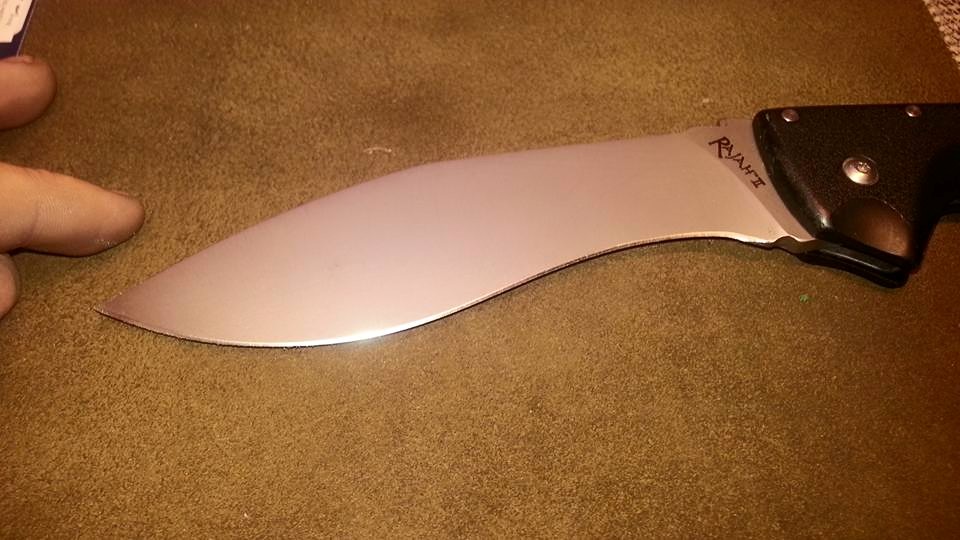
With a simple grid I could quickly, easily, and very accurately replace the blade in the exact…same…spot when its time to resharpen. Seriously whats not to love?
And again I would like to mention the issue of mirror polishing. If you’ve ever had a mirror polished edge shift in the vice or get accidentally get reclamped in a slightly different location, the bevel is not gonna be the same and basically its back to square #1… Starting over and regrinding a .5u bevel with 200 grit stones is painful to do and I desperately wish I had taken a few seconds to accurately document the xy coords. Thats how I know this is a valuable tool….for me.
Attachments:
You must be logged in to access attached files.
01/09/2016 at 3:40 am #30527Bill, the one argument was given by Cliff (you are Cliff, aren’t you? or am I mixing up uncle and nephew?). The other argument is that there is no “the” sweet spot. You’ve got one definition, which works fine in many cases, but it really depends upon what you want to achieve.
Molecule Polishing: my blog about sharpening with the Wicked Edge
01/09/2016 at 10:57 am #30528Anonymous
Inactive- Topics: 14
- Replies: 427
You guys don’t need to convince me of your need. You guys are the professionals… For me, Ill just remain a novice without the need for an advanced alignment guide..
IM not trying to argue my point… believe me, IM not trying to say my way is better. that double recurve knife would be a piece opf cake using my system and yes the center line would still ne my choice because the reach and pressure would remain the same forward of the center line and back from the center line. The negative recurve would see the same reach and stroke pressure as the positive recurve… Even the place you hold the stone can effect the pressure on the stone. hold the paddle in the center is much different than holding the paddle at the top,.. so pressure is very relevant, but I wont try to argue any further, good luck with your quest for an advanced alignment guide.. Ill stay out of this thread, without prejudice. Hope everyone has a nice weekend. Ill continue to support the system and offer comments where I think I can be either fun or helpful.
Bill aka ET
-
AuthorPosts
- You must be logged in to reply to this topic.
